Apis melliferaDark Apis mellifera Apis mellifera — Captured flora moments
The European Honey Bee (Apis mellifera) are usually recognised by the yellow and black abdominal banding and fine visible hairs all over the body.
In the following you can see the Apis mellifera usual colour banding of the abdomen.
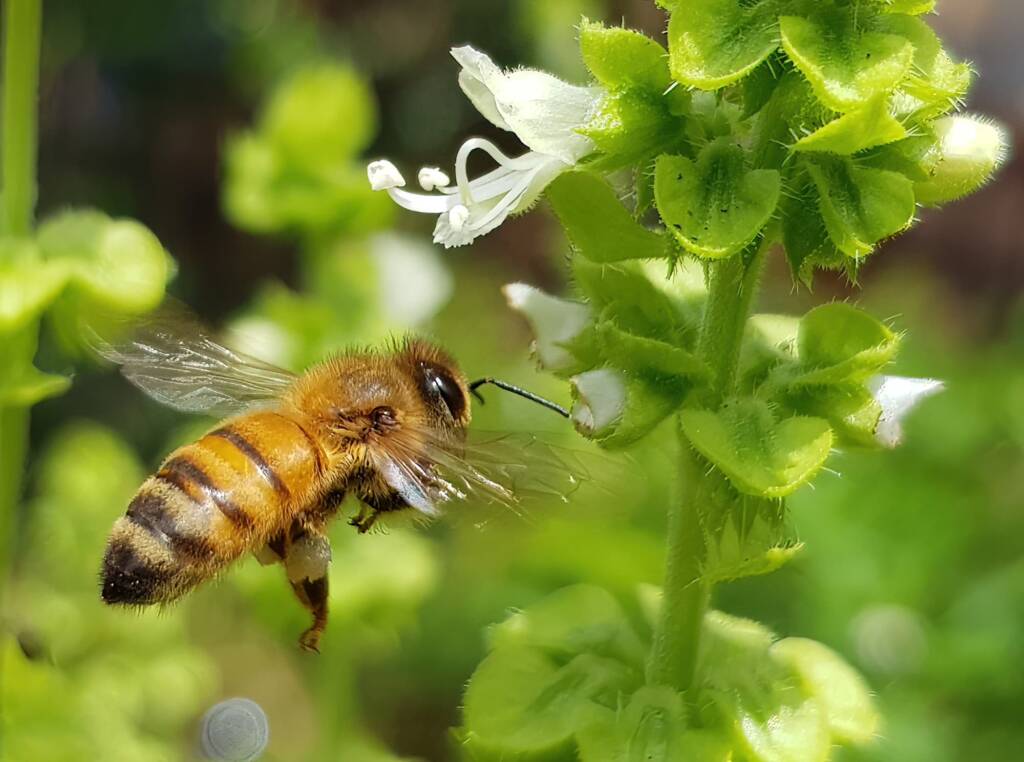
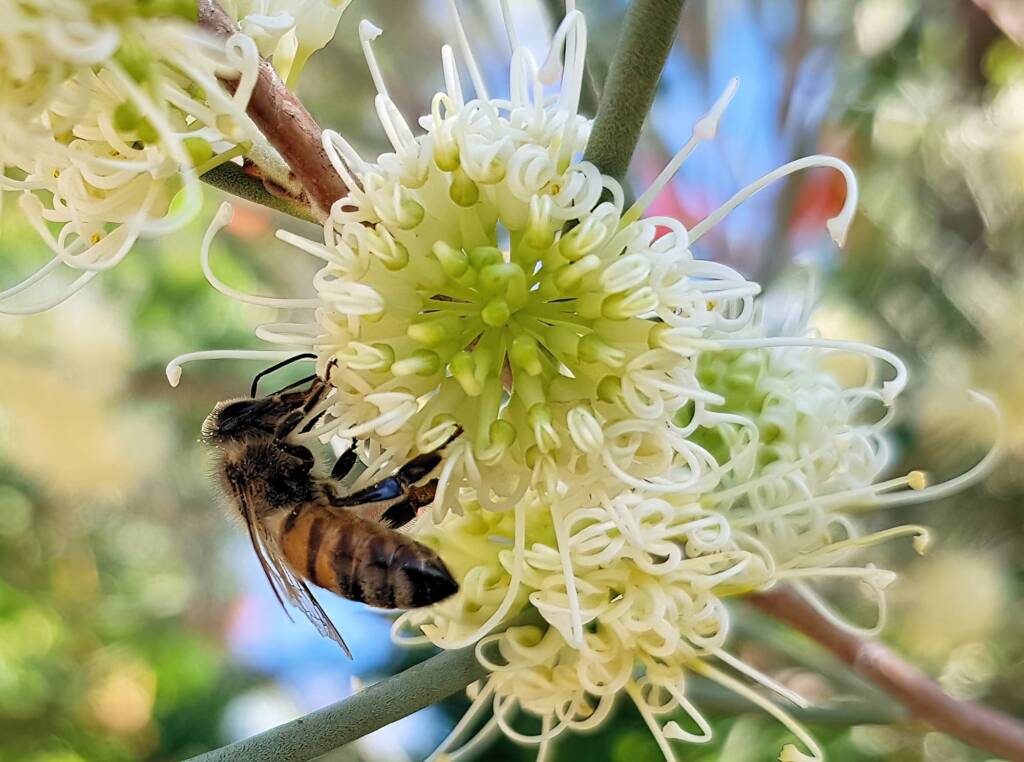
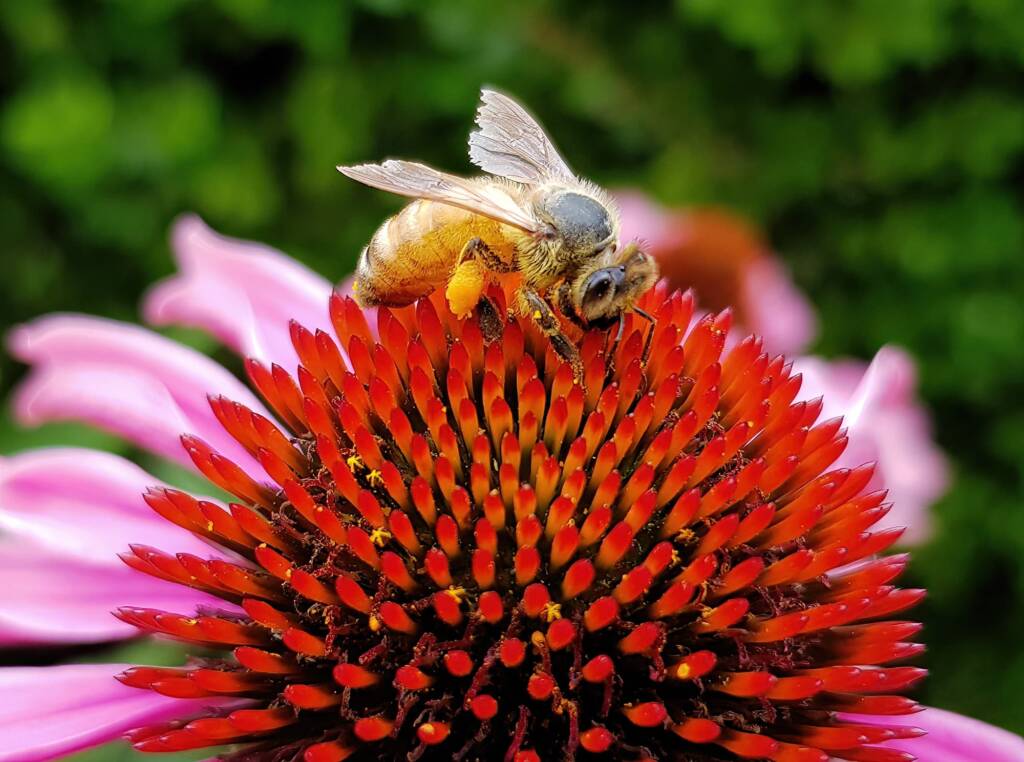
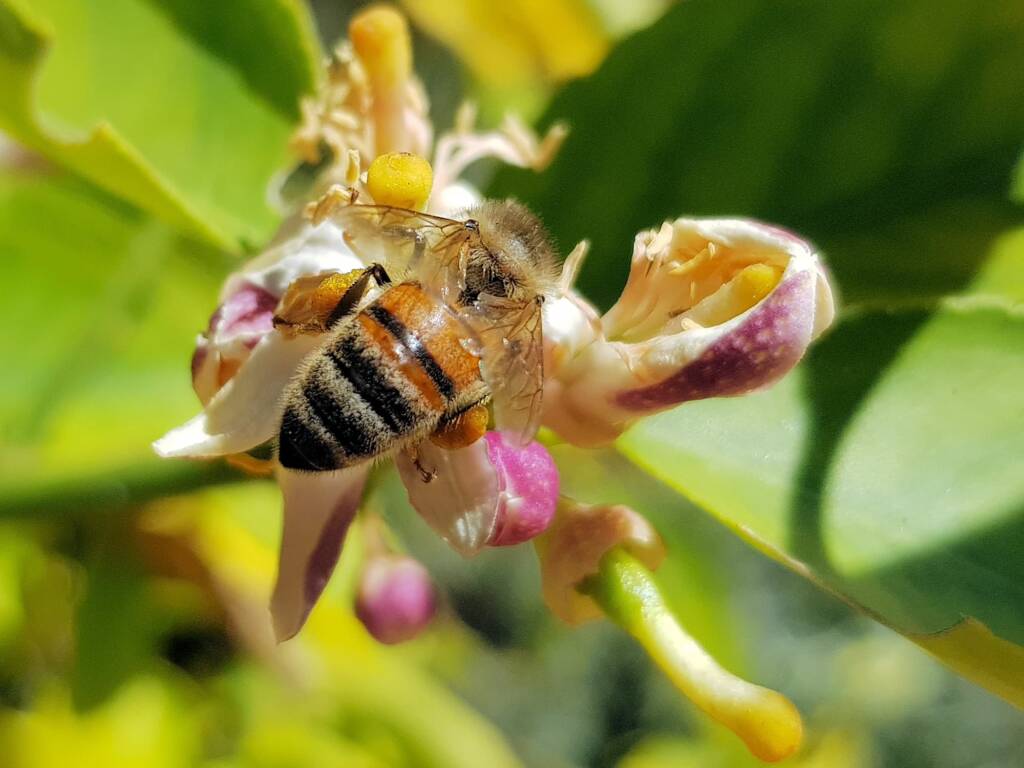
The abdominal banding can vary in colouration, that can include variation in the band patterns, with some bands being thick or thin, and some with a mix between darker and lighter banding patterns. In particular, the “worker bees” can sometimes look different, especially as they age, losing their body hairs (most likely worn away) and giving them a darker appearance. Feral honey bees can be darker in colour.
In the following example, it is an educated guess whether this Apis mellifera is a feral bee or not, but certainly it looks like it is an old bee.



At first I was confused, but having a closer look has confirmed this is a old, and very worn honey bee. The hairs have been worn off with age and work, and the dark colour indicates it’s likely to be from a feral nest.
The hind legs are the give away. The red arrow shows the hairless corbicula (pollen basket) and the yellow arrow shows the “pollen press”. Only Apis bees have these that I’m aware of.
Megan Halcroft2
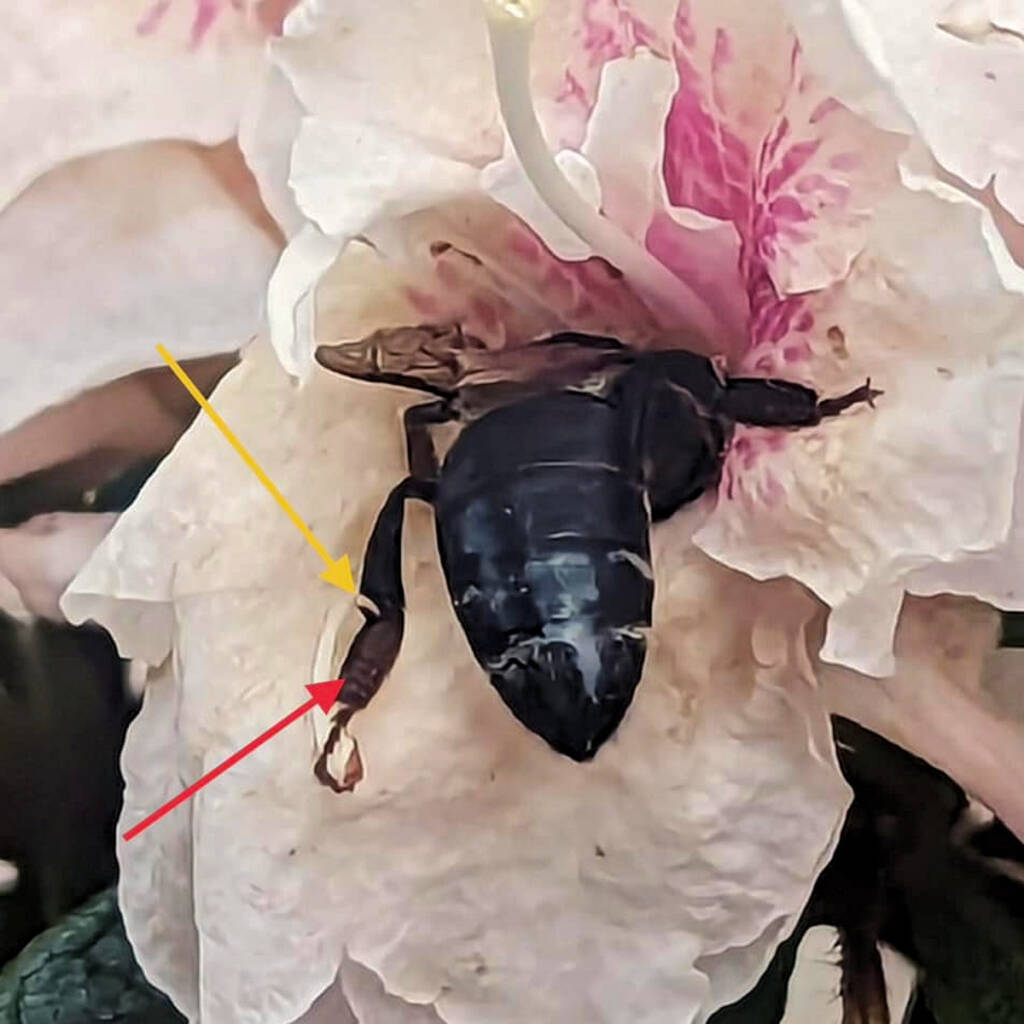
At first I too was confused but the wing venation and corbiculae say it is old, feral Apis bee. I have never seen one so black and so hairless. You can see that the ends of the fore wings are missing as well suggesting this is an old worker bee.
Ken Walker2

Footnote & References
- Photographs © Emily Olive
- Many thanks to Megan Halcroft and Ken Walker for input on colour of Apis mellifera, members of Bee Aware of Your Native Bees (Australia), https://www.facebook.com/groups/1493769094196721
Apis melliferaDark Apis mellifera Apis mellifera — Captured flora moments
BeesBees Anatomy Bee Behaviour Blogging Bees… Bees – image index Amegilla Bee Apis mellifera Austroplebeia australis Austrothurgus Braunsapis sp Ceylalictus perditellus Colletidae Euryglossinae Exoneura Homalictus Hyleoides bivulnerata Lasioglossum Lasioglossum (Chilalictus) Lipotriches Megachile Meroglossa Stenotritidae Tetragonula Thyreus Xylocopa
